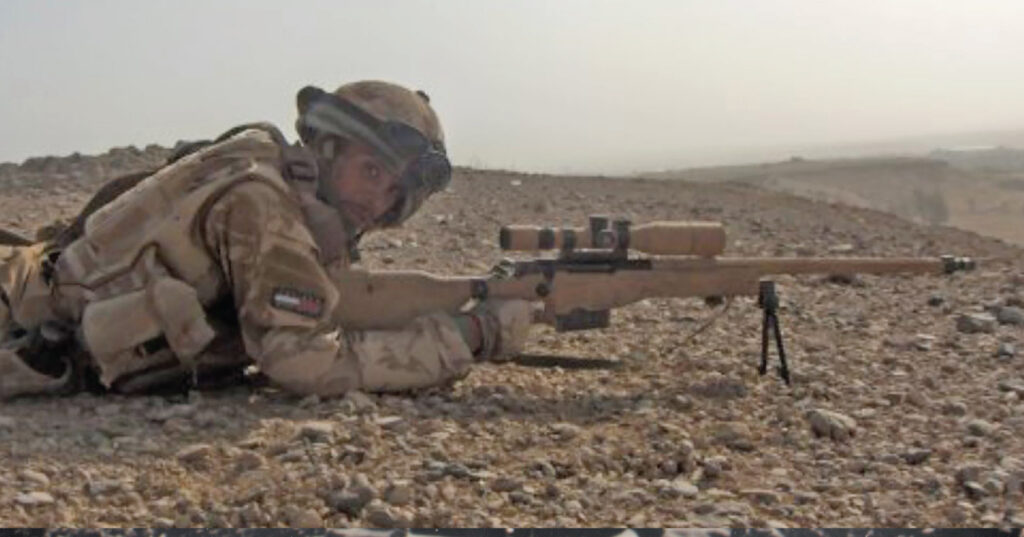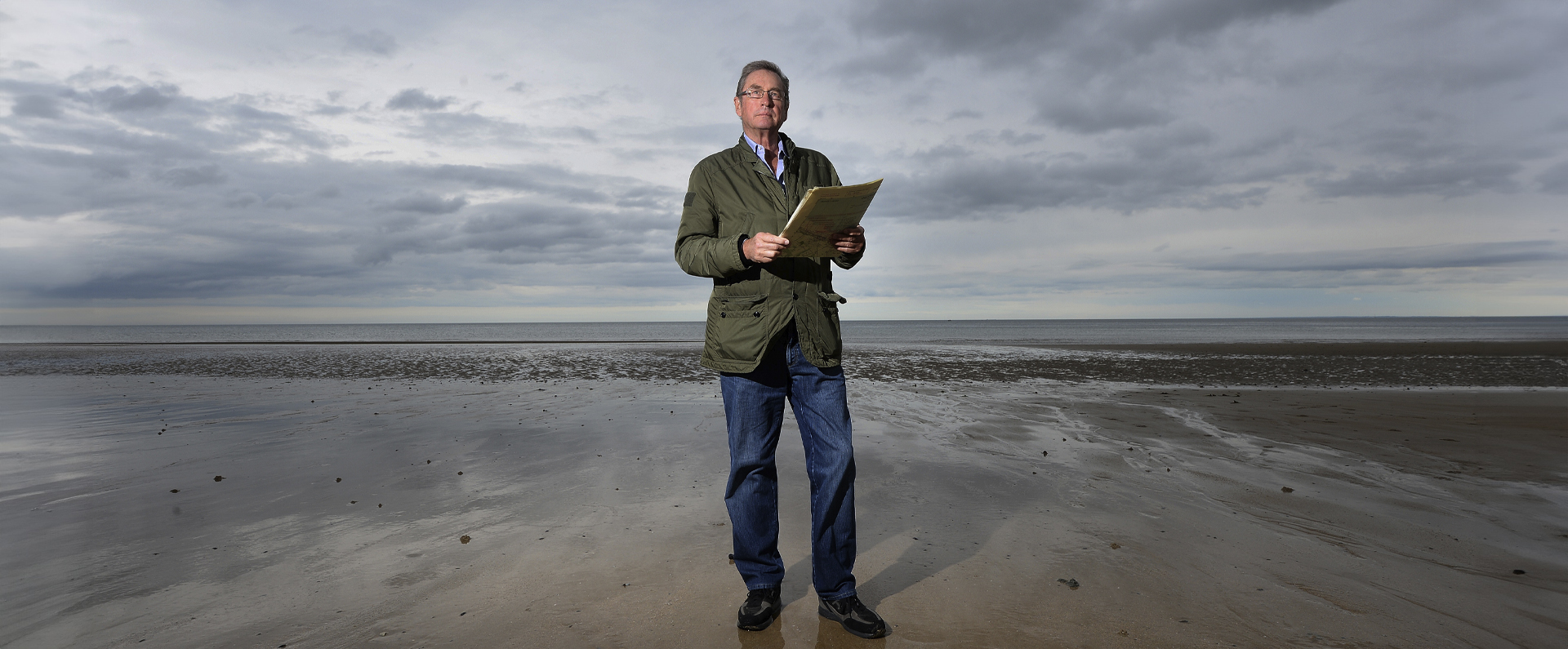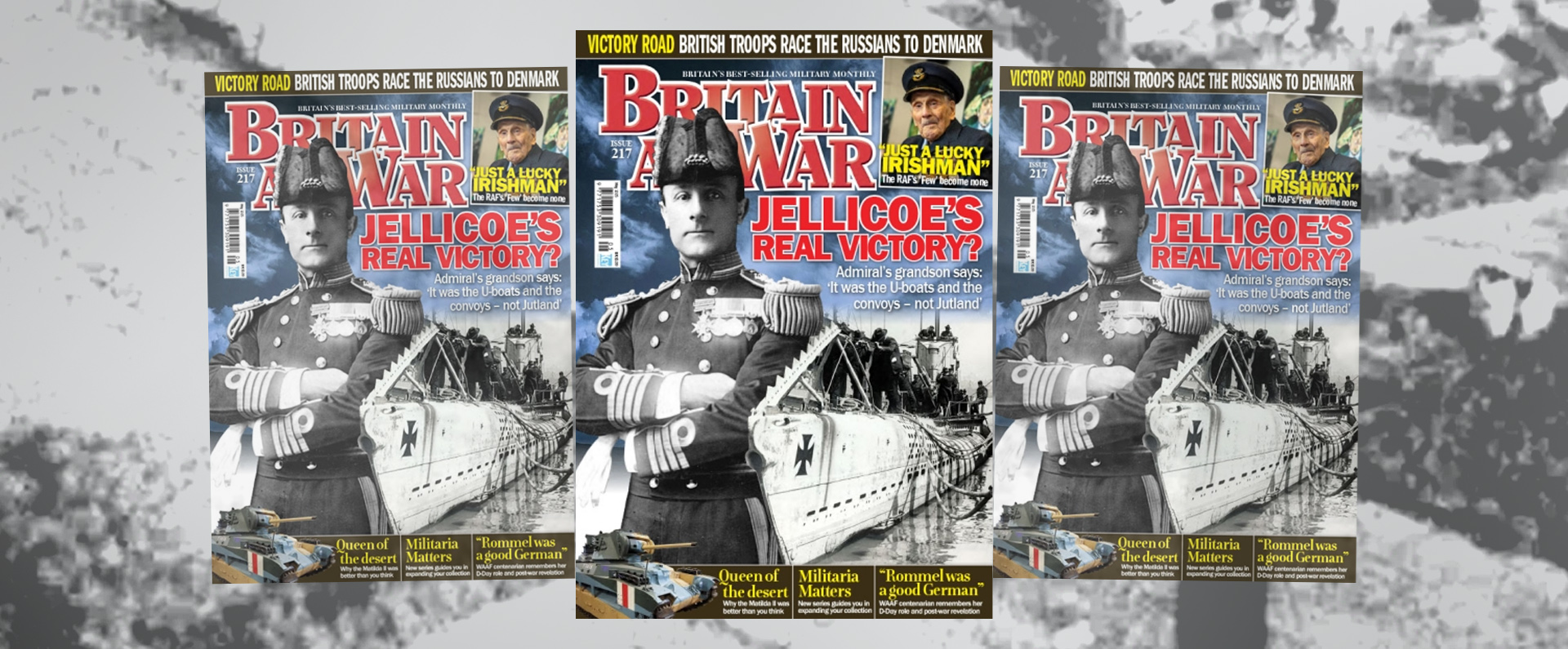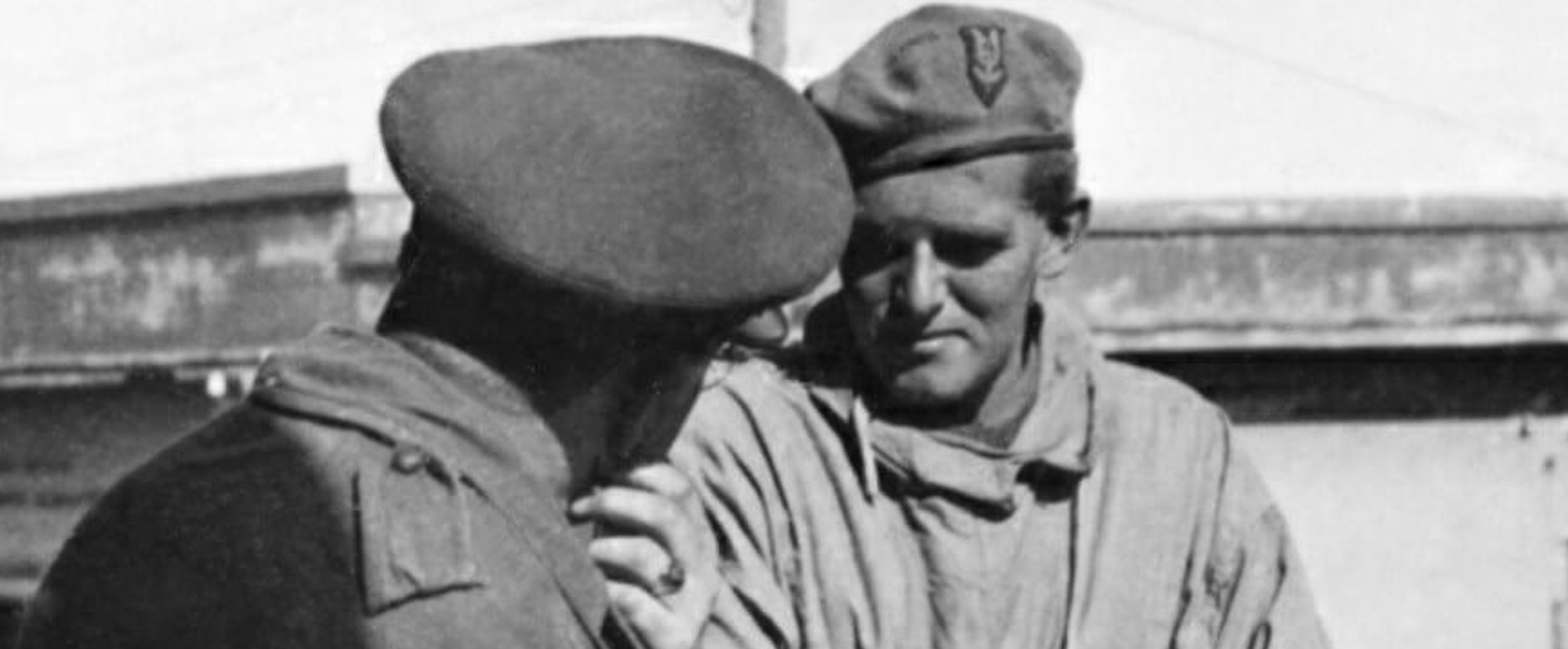
Published in Britain at War in May 2022.
Colour Sergeant Alwyn John Stevens CGC
I have two great passions in life that date back well over 60 years. The first is my overwhelming interest in bravery and the second is my fascination with the remote island of St Helena.
I was a toddler when I first visited the South Atlantic island as my family stopped off on our way to Africa where my father was taking up a post as a colonial officer. I have had a soft spot for St Helena ever since and in recent years, until Covid-19 intervened, became a regular visitor.
My interest in gallantry stems from my father, Eric, telling me about his experiences when he was a young officer charging up Sword Beach as part of the June 6 1944 D-Day landings. I was about ten at the time as he explained how his Commanding Officer had been shot dead at his side. My father himself was wounded by shrapnel, fighting on until ordered from the battlefield. For the past 35 years, I have also been a collector of gallantry medals.
With this in mind, I was delighted when I recently became the privileged custodian of a rare and much treasured gallantry award – the Conspicuous Gallantry Cross (CGC) – that was awarded to a “Saint”, as people from St Helena are widely known.
Colour Sergeant Alwyn Stevens was awarded the decoration – second only to the VC in terms of Commonwealth awards made for bravery in the presence of the enemy – for his courage in Afghanistan. Today, with Stevens’ co-operation, I am able to tell the full story of his unusual life and his outstanding valour.
Alwyn John Stevens was born at Longwood, St Helena, on October 16 1978. St Helena is a remote, volcanic island and British Overseas Territory with a population of around 4,500. It was the place of exile for Napoleon Bonaparte after he was defeated at the Battle of Waterloo. He was taken to the island in October 1815 and died there on May 5 1821, aged 51, ironically at Longwood House, just a stone’s throw from where Stevens was born.
The son of a lorry driver, Stevens also has a sister. He was educated locally and lived on the island until he enlisted in the Army on October 18 1999. Upon completion of his basic training, he joined the Royal Irish Regiment.
He was only a few weeks out of training when he was deployed to Sierra Leone. He later completed six tours of Northern Ireland, as well as tours of Iraq and Afghanistan. He qualified as a sniper in 2006.
Based largely at Fort George, Inverness, he said of his role, “Being a sniper is not just all about shooting. There is a lot of other skills around the role.” Sometimes, he was one of just a two-man team that used to go out for 72 hours at a time on specific missions.
He was trained to use day sights and night sights and he used to carry both his sniper rifle and his standard rifle when on a mission. The sights on sniper rifles have a range of up to three miles. He said of the prospect of battle. “Everyone deals with it in their own way. The best way to deal with it is to talk to your mates. I won’t say that I have never felt afraid.”
In 2008, Stevens took part in a challenging tour of Afghanistan as part of Operation HERRICK 8. On September 12 2008 while serving as a corporal, he performed remarkable acts of gallantry in Helmand Province which led to the award of the CGC. His official citation stated:
“Corporal Stevens was an Afghan National Army (ANA) platoon mentor operating in support of an ANA deployed at Patrol Base ATTAL in Gereshkh Valley. On 12 Sep 08, he and his six-man Operational Mentor Liaison Team (OMLT), with a small group of ANA, were patrolling North East of the Patrol Base to dominate the surrounding vegetated Green Zone.
“A local national approached the patrol and warned them of a sizeable enemy force in the vicinity intent on ambushing the patrol.
“Stevens pushed forward with six men to secure a compound from which he could observe the area. Approaching the mud-walled compound, he had a sudden meeting engagement with eight Taliban who engaged with heavy small arms fire. Instinctively, Stevens charged the enemy firing from the hip as he advanced. With his initial response, he successfully killed two enemies, wounded another and forced the remainder to withdraw and take cover in a field of corn, 7 feet high.
“The enemy quickly established a firm footing and resumed fire. Stevens no longer had the advantage as he was under effective small arms and rocket-propelled grenade (RPG) fire. Stevens rallied his five men to him and organised them to try to win the firefight. Concurrently, a second OMLT patrol manoeuvred to the West to put in a flanking assault while the Fire Support Team cued up 105mm artillery and an airstrike. Stevens decided to hold his position throughout the offensive support engagement despite being only 120m from the target in order to fix them in position for destruction. He and his men applied controlled fire, preventing an enemy egress.
“Following the successful fire mission and flanking assault, Stevens led an assault on a further enemy position which was suppressing from 100m away. Stevens led from the front and assaulted with grenades and his personal weapons supported only by his small team. His quick and aggressive attack accounted for most of the enemy, forcing the remainder to fall back under his onslaught.
“The battle continued for over three more hours. A further ten Taliban positions unveiled themselves and engaged the two OMLT patrols. Depleted stocks of ammunition now forced the OMLTs to withdraw. Stevens moved his men, still under heavy fire, into a position where they could suppress the enemy and thus extract the other OMLT. Stevens remained in position as Close Air Support, and 105mm guns conducted ‘danger close’ fire missions. Stevens stayed firm, dominating the enemy until his paired patrol had gained relative safety. Only then did he fall back and join them.
“Stevens displayed extraordinary courage, selflessness and leadership. He personally engaged and killed several Taliban Fighters and set conditions for the defeat of a strong enemy force. His actions ensured the enemy never again appeared in such strength in the ATTAL area during Op HERRICK 8. Stevens’ outstanding gallantry was witnessed by two British Captains and his peers; it deserves the highest recognition.”
His CGC was announced in The London Gazette on March 6 2009. It was presented to him by The Queen in an investiture at Buckingham Palace. Remarkably, two other soldiers from the Royal Irish Regiment were awarded the CGC for gallantry on the same tour.
Stevens said of his action: “We came under heavy enemy fire from three different sides and they were moving to surround us, so I took a team and pushed out to the flank and managed to engage them before they engaged us. I came across them, shot them three and called airstrikes on their positions.
‘When you’re in a situation like that the training kicks in and you just deal with it and forget about everything else. You don’t have much time to think, it is more of a reaction, but if I hadn’t done what I did, I probably wouldn’t be here today.
“When it comes to a fire-fight you just have to take control, remembering that as well as yourself, you have your men to deal with. You don’t question it, you just get on with it. You can’t doubt yourself.”
Stevens said that while still in Afghanistan he knew he was being recommended for a bravery award. However, it was only when he was back in Britain that he was informed by his Commanding Officer that he had been awarded the CGC.
The CGC was created in 1993 and first awarded in 1995. It was instituted after a review of the British honours system to remove distinctions of rank in the awarding of gallantry decorations. Since 1995, there have been around 60 awards of the CGC “in recognition of an act or acts of conspicuous gallantry during active operations against the enemy”.
Stevens was one of three soldiers from his regiment to receive the CGC from the Queen in an investiture at Buckingham Palace. “She asked me how the battalion was doing and what we were doing next,” he said, adding that it was a proud moment for him and his family.
Stevens became a Sniper Platoon Commander in 2014. In June 2019, he was seconded to The Black Watch, the 3rd Battalion, The Royal Regiment of Scotland.
Stevens said that in 2017, while still serving in the Army he struggled with mental health issues, linked to Post Traumatic Stress Disorder (PTSD). “I went to see a doctor and got the help that I needed,” he added. As well as coming close to being killed in battle himself and witnessing some distressing scenes, he lost a close friend killed in Afghanistan and had another friend shot in the head, who is now in a wheelchair.
Stevens was discharged from the Army in October 2021 after 22 years’ service. His medal group was sold at auction by Duke’s in November 2021, when I became its proud custodian. “I am very proud of what I achieved during my Army career,” he told me.
Now aged 43 and married with three sons and a daughter, Stevens lives in Inverness and works as a Training Area Operative for Landmarc, a partner of the Ministry of Defence. His sister, Deborah, also lives in Scotland having also left her native St Helena many years ago.
Stevens’ mother, Joyce, still lives on St Helena but he has only been back twice in 23 years, most recently for the funeral of his father, Eric, in 2020. His only previous visit to the island was for Christmas 2001 when he was still single and he returned to see his family.
“But I still call it home,” he added. St Helena and its inhabitants should take enormous pride in the actions of this courageous and modest man.
Download a PDF of the original Britain At War article
For more information, visit:
LordAshcroftOnBravery.com


